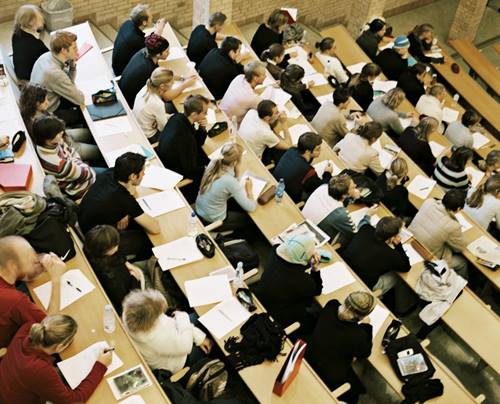Education & Welfare
Education
The Danish public school system consists of one year of pre-school education, nine years of primary and lower secondary education and an optional tenth grade. Basic education is hence obligatory for all Danish children between the ages of 6 and 16. In Denmark more than 50% of a year group enters higher education.
All public schools in Denmark are fully financed by the state and the municipalities and are tuition-free. Danish Universities are also free for Danish, Nordic and EU citizens. Private schools are partly financed by state subsidies, but some tuition fees apply.
The quality of Danish education is assured in many ways. It is mainly regulated by the state, and all public educational institutions are approved and evaluated on an ongoing basis. Students at Danish institutions are encouraged to play an active role in their learning process and take responsibility. Because of this, many Danish students are highly engaged in their education and the quality hereof.
Danish higher education has a long tradition of combining high academic standards, interdisciplinary studies and project‐based activities to ensure active and motivating learning environments. Danish higher education institutions are highly international and offer a wide range of opportunities for international students such as a large number of programmes taught in English. A recent survey with responses from more than 3,500 international students studying in Denmark showed that 78% of the students would recommend Denmark as a study destination and 93% consider Denmark to be a safe country to live in.
To read more about education in Denmark, visit:
https://denmark.dk/society-and-business/lifelong-education
Photo: Danish Universities are free for Danish, Nordic and EU citizens.
Welfare
When people talk about the Danish labor market they often use the term “flexicurity” to describe the model, which is successfully managing the challenges of globalization and securing steady economic growth and employment. Flexicurity is a composite of flexibility and security. The Danish model has a third element - active labor market policy - and together these elements comprise what is often referred to as “the golden triangle of flexicurity”.
One side of the triangle is flexible rules for hiring and firing. This makes it easier for the employers to dismiss employees during downturns and hire new staff when things improve. The second side of the triangle is unemployment security in the form of a guarantee for a legally specified unemployment benefit - up to 90% for the lowest paid workers. The third side of the triangle is the active labor market policy. An effective system is in place to offer guidance, a job or education to all unemployed citizens. Denmark spends approx. 1.5% of its GDP on this active labor market policy.
The aim of flexicurity is to promote employment security over job security. The model has the dual advantages of ensuring employers a flexible labor force, while employees enjoy the safety of the unemployment benefit system and an active employment policy resulting in a high degree of financial security. In December 2007, the European Council of the EU adopted a set of Council Conclusions on flexicurity by which the common principles of flexicurity will guide EU member states when implementing reforms in order to meet the aims of the Lisbon Strategy of Growth and Jobs.
To read more about the Danish welfare system and flexicurity, visit:
https://denmark.dk/society-and-business/the-danish-welfare-state

